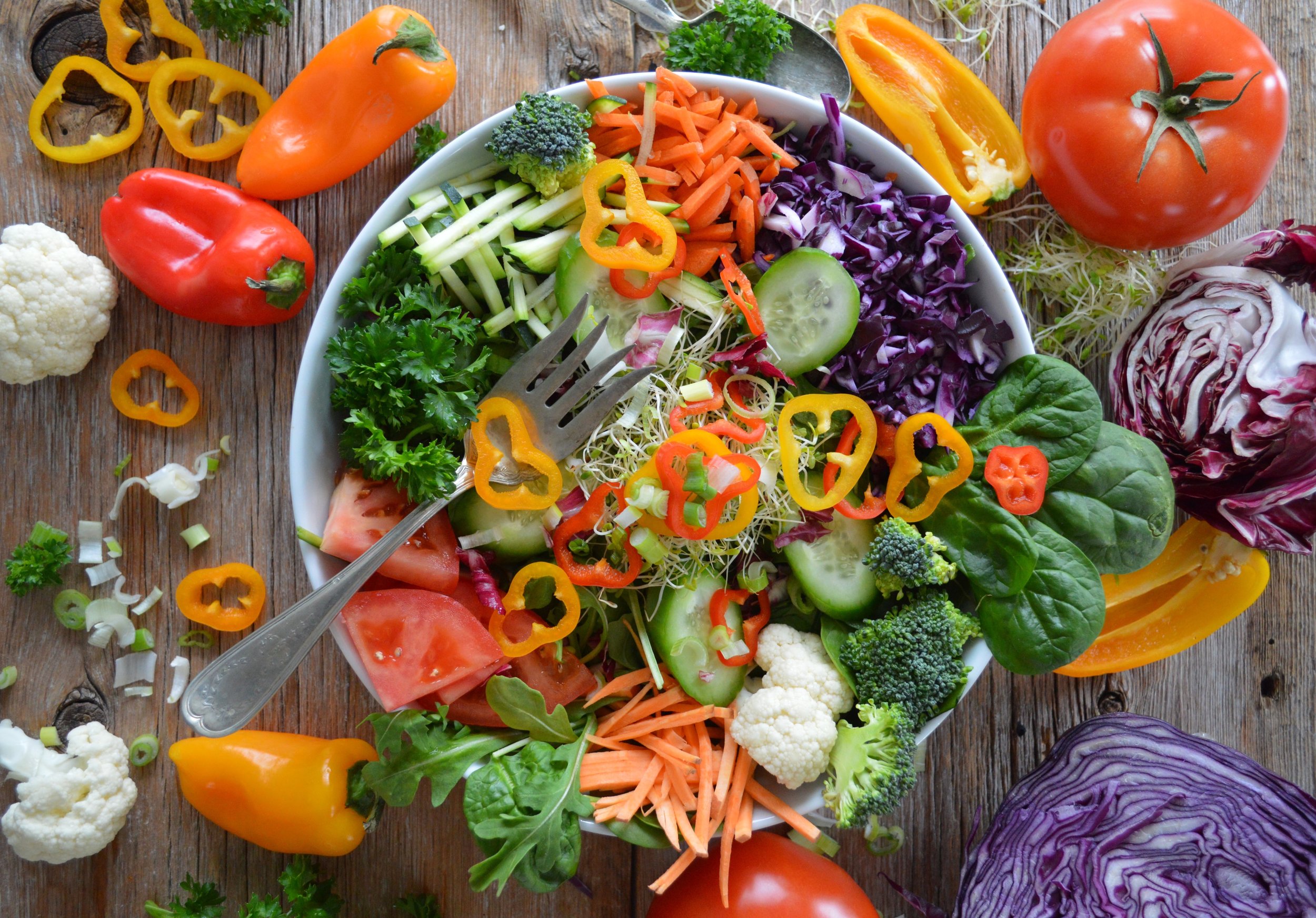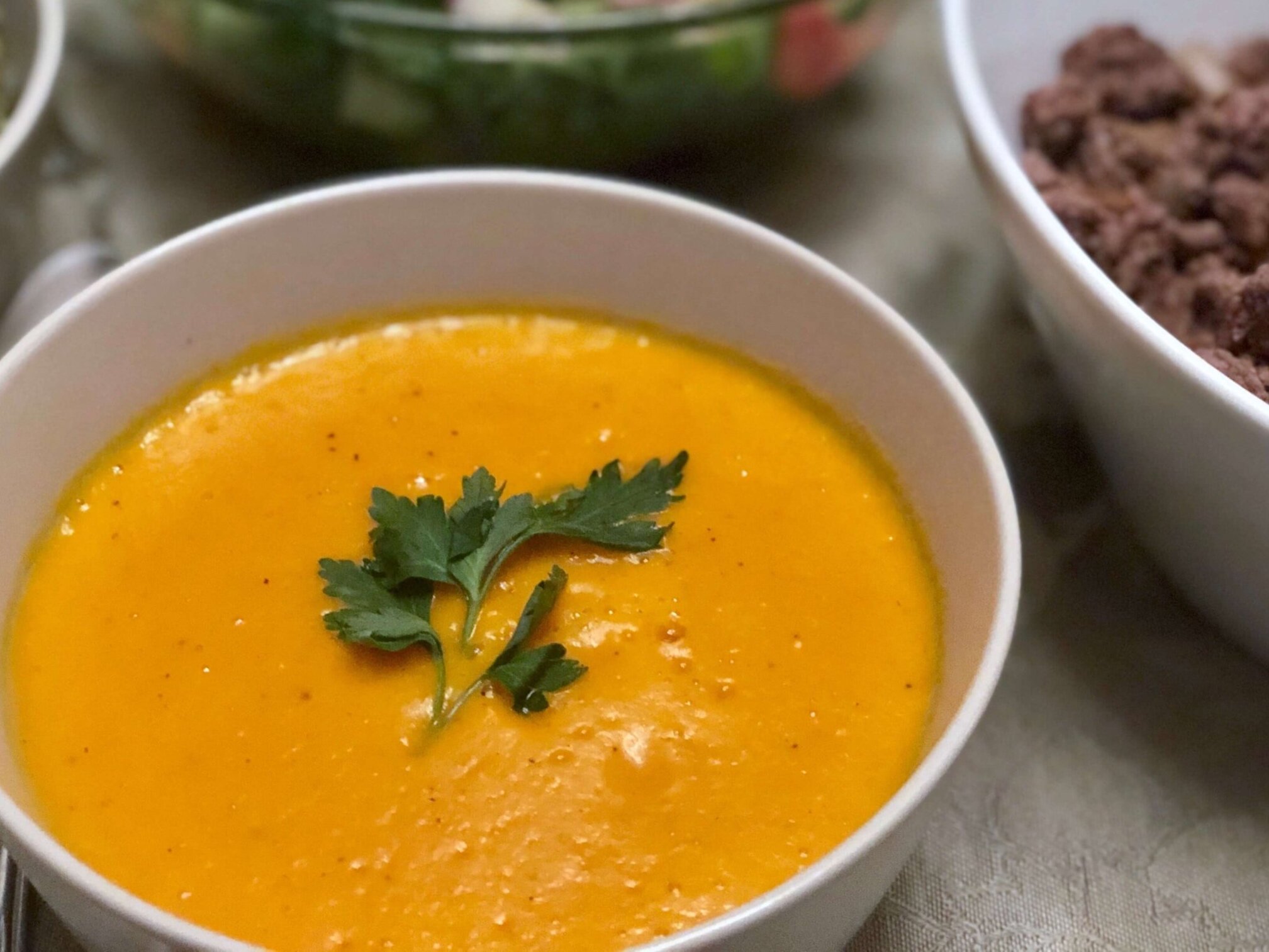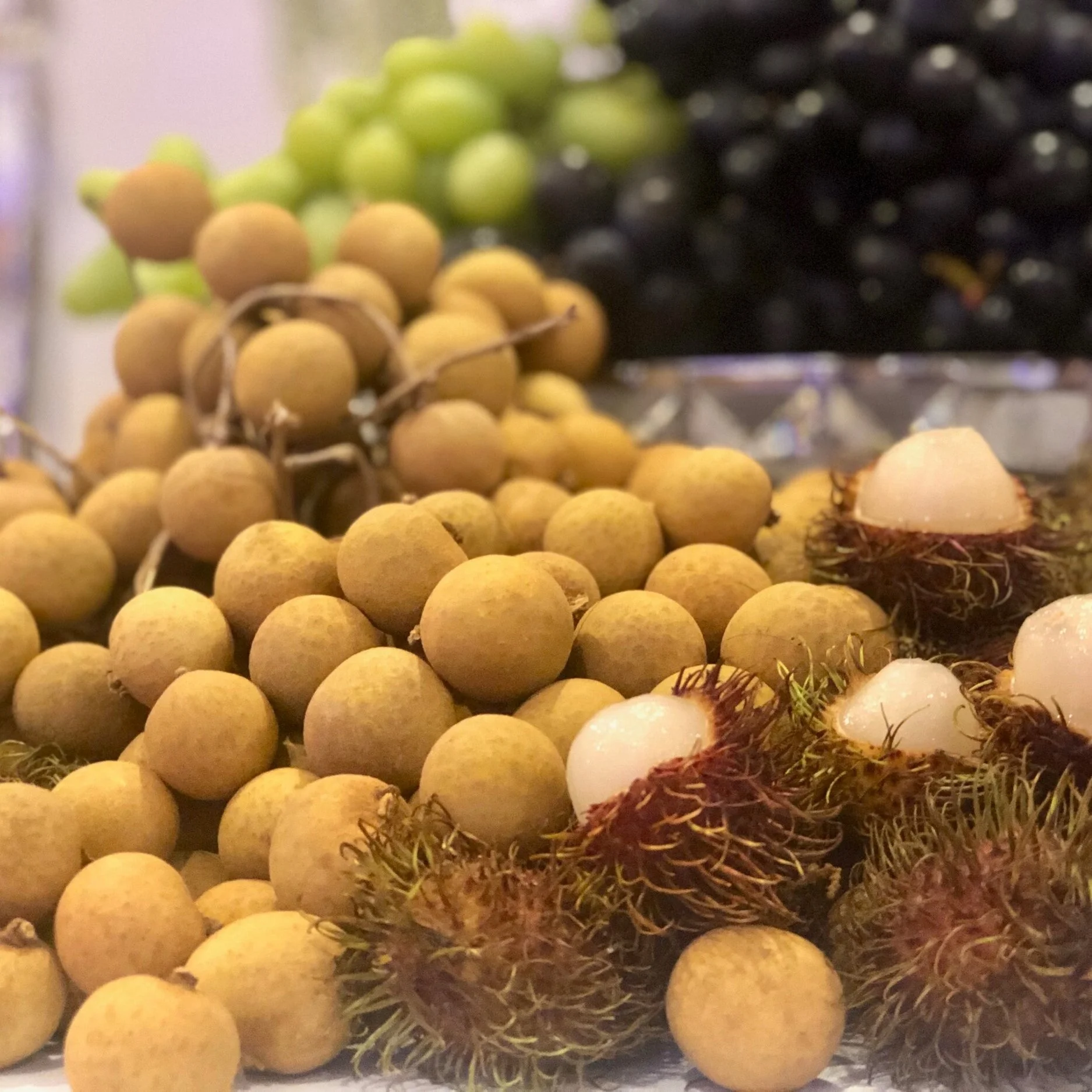A Culinary Guide to Symbolic Rosh Hashanah Foods
/Rosh Hashanah, the Jewish new year, begins at sundown tonight. What are the culinary customs of this holiday – and what are some healthful dishes to prepare and enjoy while adhering to the traditional foods?
My Traditional (Ashkenazi) Rosh Hashanah
My siblings and I grew up associating Rosh Hashanah with eating apples dipped in honey. Although that was the primary tradition, we also enjoyed picking the arils from the pomegranates on Rosh Hashanah. Later on, my siblings and I would compete to see who could find the most exotic new fruits for Rosh Hoshanah. Of course, the main part of the meal was always traditional Ashkenazi cuisine: raisin challah, matzo ball soup, brisket, kugel, apple cake, cookies, and other Northern European-style foods.
My wife, though, being of Syrian descent, grew up with a very rich and entirely different Rosh Hashanah culinary tradition. Her family's customs are based upon the concept of "simanim," which are symbolic and meaningful foods. (The word "simanim" itself means "symbol" or "sign.") This year, we decided to embrace those customs at our Rosh Hashanah table.
The past two years have been strongly defined not only by COVID but also by sustained and lingering supply chain shortages with our food. Therefore, the simanim of Rosh Hashanah present an opportunity to nourish not just our souls but also our bodies.
What better way to accomplish this outcome than by making an entire meal out of the simanim! Even more importantly, these foods have tremendous nutritional benefits, which I will explain in the second half of this piece.
Symbolic Foods in Judaism
Symbolic foods are a major part of the Jewish holidays. On Chanukah, we eat latkes. On Purim, we eat hamantaschen. On Shavuot, we eat dairy foods like crepes and cheesecake. And on Rosh Hashanah, we eat apples and honey. Passover, though, is the most overtly food-centric, with endless arrays of traditional and symbolic foods. The Seder plate alone is loaded with at least 6 symbolic foods. Naturally, the specific ingredients vary from one Jewish culture to another. But the concept is always the same.
Rosh Hashanah, though, is so much more than apples, honey and new fruits. In fact, there is a strong tradition among Sephardic, Persian, Middle Eastern and North African Jews to imbue the entire meal with the meaningful foods of the simanim.
Where Does The Custom of Simanim Originate?
On both nights of Rosh Hashanah, we eat foods that symbolize our hopes and prayers for a sweet new year. The source for these Rosh Hashanah foods comes directly from the Talmud, as stated by the Talmudic sage Abaye: "... a person should be accustomed to eat, at the start of the year, gourd, fenugreek, leeks, beets, and dates, as each of these grow and multiply quickly, which is a good omen for the deeds of the upcoming year."
After we make the festive kiddish, wash our hands and eat the challah dipped in honey, we recite a brief “Yehi Ratzon” benediction for each siman, and then we eat that food. The prayer takes the form of "May it be Your will, Lord our G-d and the G-d of our fathers...".
The simanim are chosen because the Hebrew word that describes each one is similar to the Hebrew word for a concept that they represent. For instance, "date" is "תמר" and "end" is "תם". Therefore, we eat dates to symbolize “finishing off” our enemies.
So what, exactly, are the simanim – and what do they represent?
Simanim on Rosh Hashanah
In this section, I describe the reason why specific simanim are chosen, their spiritual meaning, their dominant nutritional benefits and dishes to prepare with them.
Apple and Honey
Word: "apple and honey" is "תפוח בדבש".
Symbolism: We pray that G-d will renew us for a year filled with goodness and sweet like honey.
Nutrition: Apples are packed with fiber (including pectin, which may play a role in lowering LDL "bad" cholesterol), vitamin C and antioxidants, including the anti-inflammatory phytochemical quercetin. A high-quality raw honey contains an abundance of amino acids, vitamins, minerals, anti-oxidant polyphenols, pollen, enzymes and probiotic bacteria such as acidophilus.
Recipe: The best way to eat apples and honey is to match a Gala or Fuji apple with a premium raw honey for Rosh Hashanah. Bloom is a widely-available option. My two favorites are their avocado honey and buckwheat honey. Another option is to use date honey (also known as silan). This is actually what the Torah means when it refers to honey. You can purchase a delicious silan from Soom Foods.
Pomegranate
Word: "pomegranate" is "רימון".
Symbolism: We pray that our lives should be filled with mitzvot, just like a pomegranate is filled with hundreds of seeds.
Nutrition: Pomegranates are well-known for their host of health-supportive compounds. These include polyphenols (antioxidant compounds that help mange blood pressure and circulation, control inflammation and reduce blood sugar levels).
Recipe: An excellent way to incorporate pomegranate into the meal is to make a green salad with sliced apples and pomegranate seeds, topped with a fruity vinaigrette dressing.
Beets
Word: "beet" is "סלקא" and "depart" is "סלק".
Symbolism: We pray that G-d will cause our enemies, haters, and those who wish evil upon us to depart.
Nutrition: Beets have potent antioxidant and anti-inflammatory benefits. They also contain nitrates that help widen blood vessels, which may contribute to better blood pressure. Beets, and especially the deliciously tasty leaves, also contain folate, potassium, magnesium and vitamin C. If you eat a lot of beets, though, just be prepared for the red urine that follows!
Recipe: Steamed and chopped beets mixed with olive oil and ground cumin makes an excellent appetizer.
Black-Eyed Peas
Word: "black-eyed pea" is "לוביא" and "" is "רוביא".
Symbolism: We pray that G-d will increase our praiseworthiness and give us courage and confidence.
Nutrition: These cute little beans (they are actually beans and not peas) are high in dietary fiber. They also contains lots of iron and folate, which both help to prevent anemia. Folate also helps the body make new cells. Like many other simanim on this list, it also contains a lot of vitamin to boost your eye and skin health.
Recipe: You can make a delicious black-eyed pea salad by combining them with celery and red peppers. Top with a dressing made of olive oil and vinegar, cumin, paprika, salt and crushed red pepper.
Squash/Gourd
Word: "gourd" is "קרא" (and also "announce") and rip apart is "קרע".
Symbolism: We pray that G-d will rip up any evil verdicts against us, and that our merits will be announced in front of Him.
Nutrition: Squash are a very reliable source of carotenoids (which include lutein and zeaxanthin, as well as beta carotene, a precursor to vitamin A). Vitamin A supports good vision and immune function. Squash also contain vitamins C and K, as well as the minerals magnesium, potassium, manganese, copper, phosphorus, calcium, and iron.
Recipe: Sugar baby pumpkin soup (the recipe calls for pumpkin but it works with any gourd, like kabocha, kuri or butternut)
Dates
Word: "date" is "תמר" and "end" is "תם".
Symbolism: We pray for G-d to vanquish our enemies, haters and those who wish evil upon us.
Nutrition: Dates are a great source of quick energy. They are very high in sugar but also packed with lots of fiber, which makes them well suited to bumping up energy levels. They also contain copious amounts of iron, calcium, copper, potassium, magnesium and selenium.
Recipe: Homemade almond milk (you can even spice it up as a chai flavor with cinnamon, ginger, cardamom, black pepper, nutmeg, and cloves).
Leeks
Word: "leek" is "כרתי" and "cut" is "כרת".
Symbolism: We pray for G-d to cut down our enemies, haters, and those who wish evil upon us.
Nutrition: Leeks, which are allium vegetables like onions, shallots, garlic and scallions, are low in calories while being high in vitamins and minerals. They're particularly high in beta carotene (for vision and immune function), vitamin K1 (which helps with blood clotting) and vitamin C (which supports immune health, tissue repair and iron absorption. They also contain very high amounts of vitamin C, vitamin K and dietary fiber.
Recipe: Leek and chard frittata
Ram's Head/Fish Head/Cow's Tongue
Word: "ram's head" is "ראש כבש".
Symbolism: We pray that God will make us like a head and not a tail (i.e. that by following G-d's mitzvot, we will always be ascendant and never subordinate), itself alluding to the ram's horn shofar that we blow during the holiday.
Nutrition: Fish heads have real nutritional benefits; cow's tongue and ram's head, not so much. Fish heads contain high levels of vitamin A, omega-3 fatty acids, iron, calcium and zinc.
Recipe: For the fish heads, you can simply boil them until they are soft and tender.
Simanim: Lucky Foods for Abundance
According to Sephardic tradition, these simanim are "lucky" foods and should be eaten in abundance during the festive meals of Rosh Hashanah. I hope that this somewhat non-traditional approach (at least to an Ashkenazi) is helpful in coming up with your holiday menu.
What are some of the dishes that you are making this year?
Shana tova u'metuakah!
Sources
https://www.chabad.org/library/article_cdo/aid/905170/jewish/Rosh-Hashanah-Seder.htm
https://www.hsph.harvard.edu/nutritionsource/food-features/apples/
https://nutritiondata.self.com/facts/fruits-and-fruit-juices/2038/2
https://health.clevelandclinic.org/the-health-benefits-of-beets/
https://www.organicfacts.net/health-benefits/fruit/squash.html
https://www.organicfacts.net/health-benefits/fruit/health-benefits-of-dates.html









